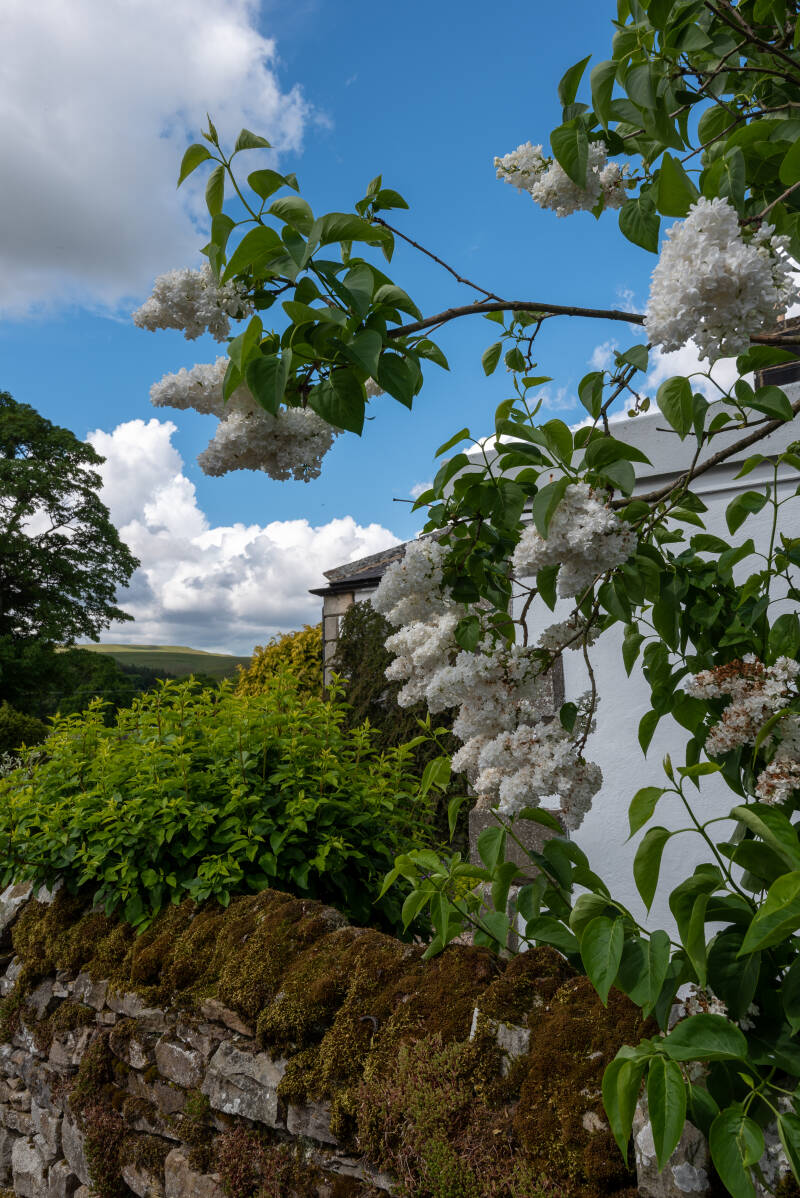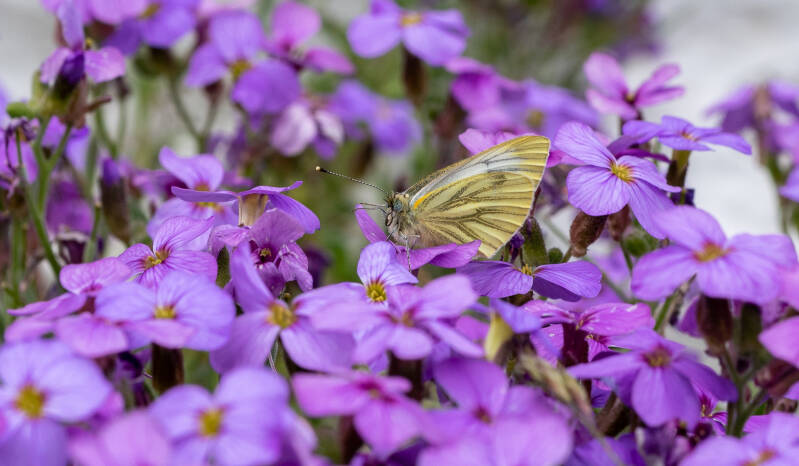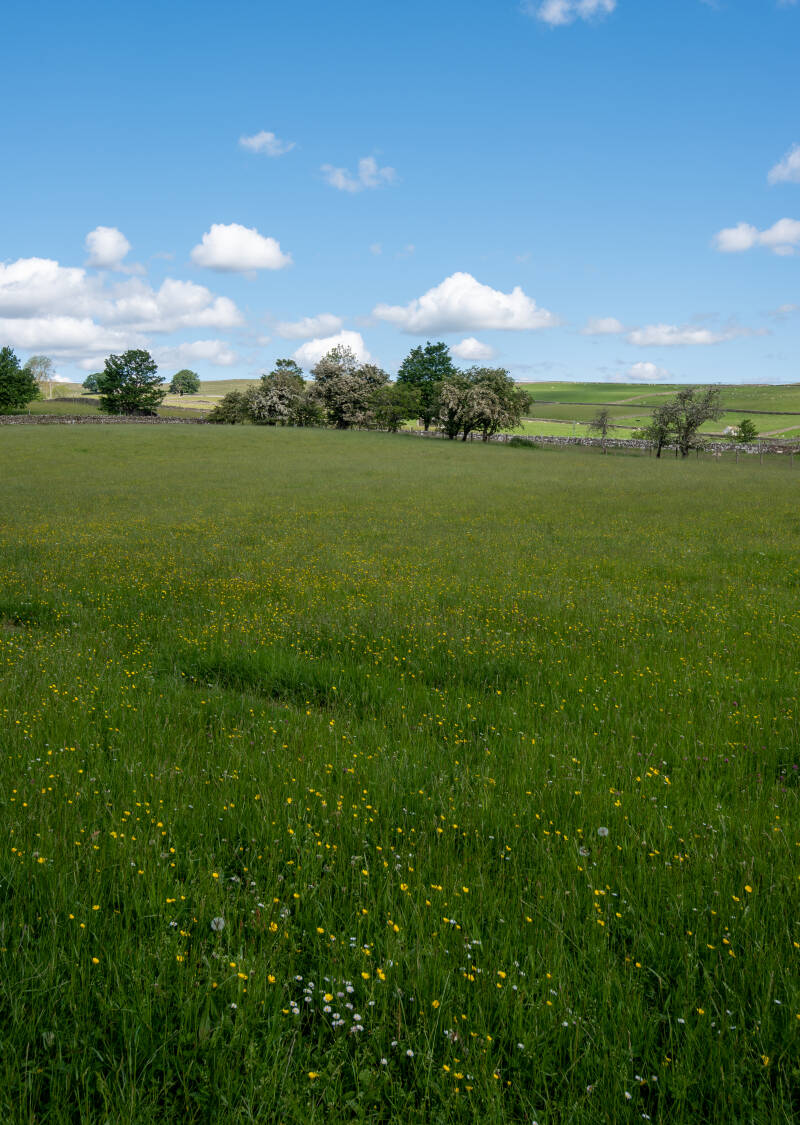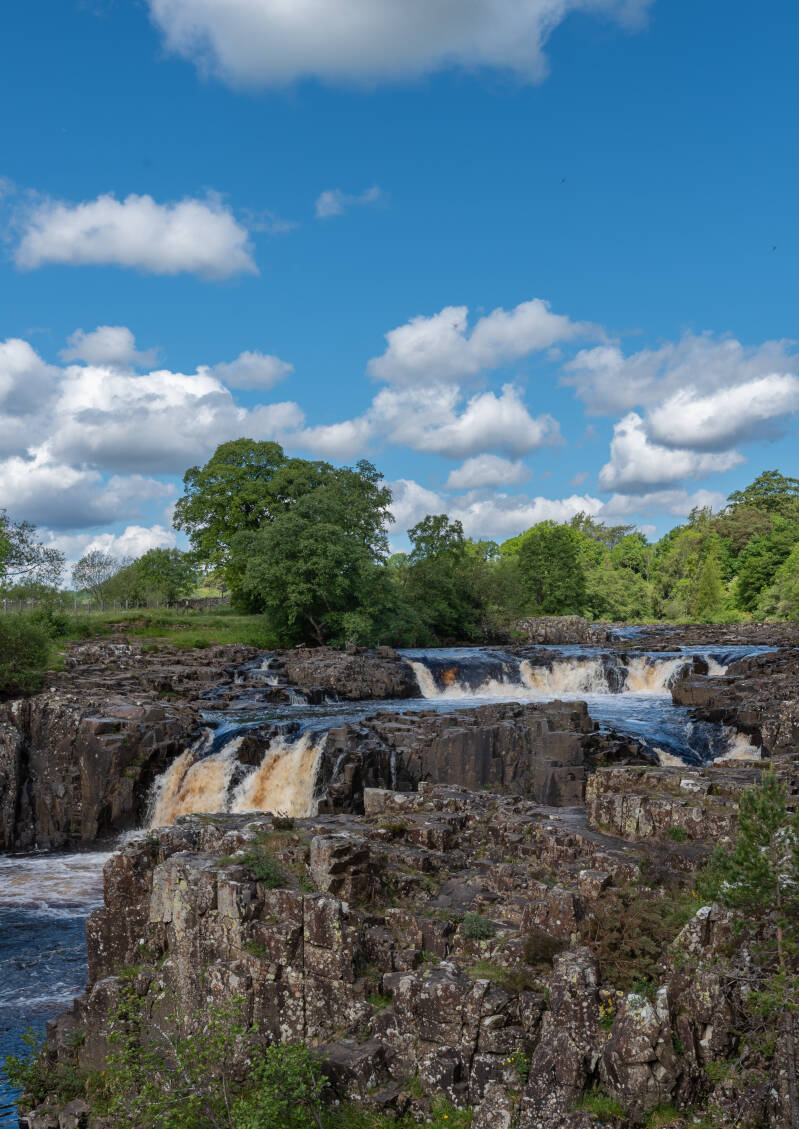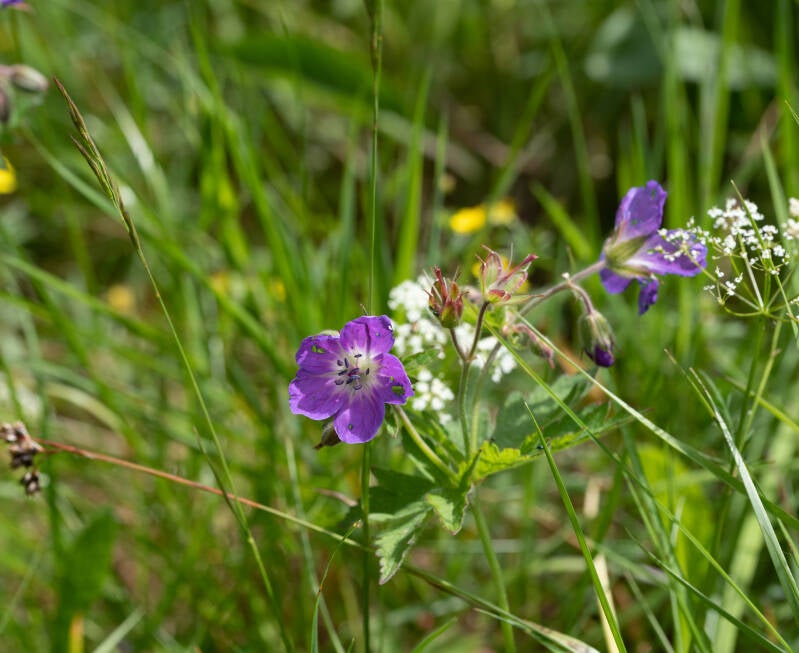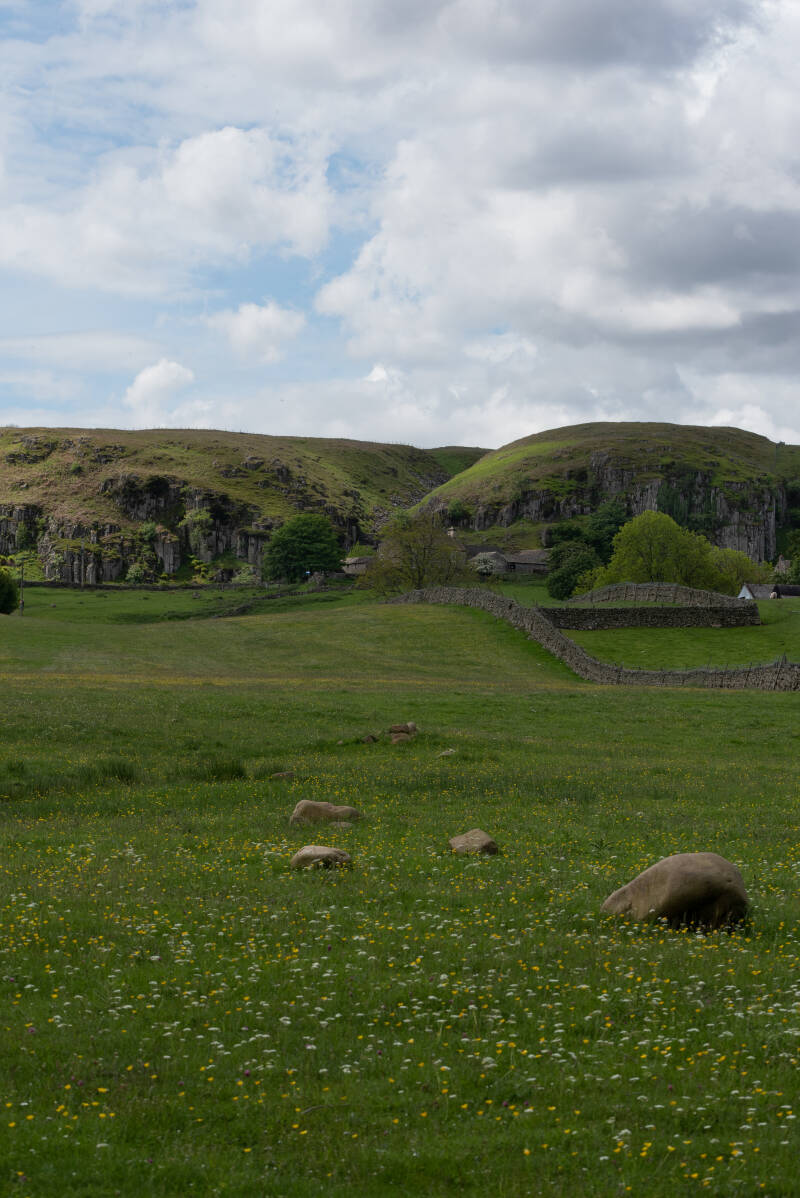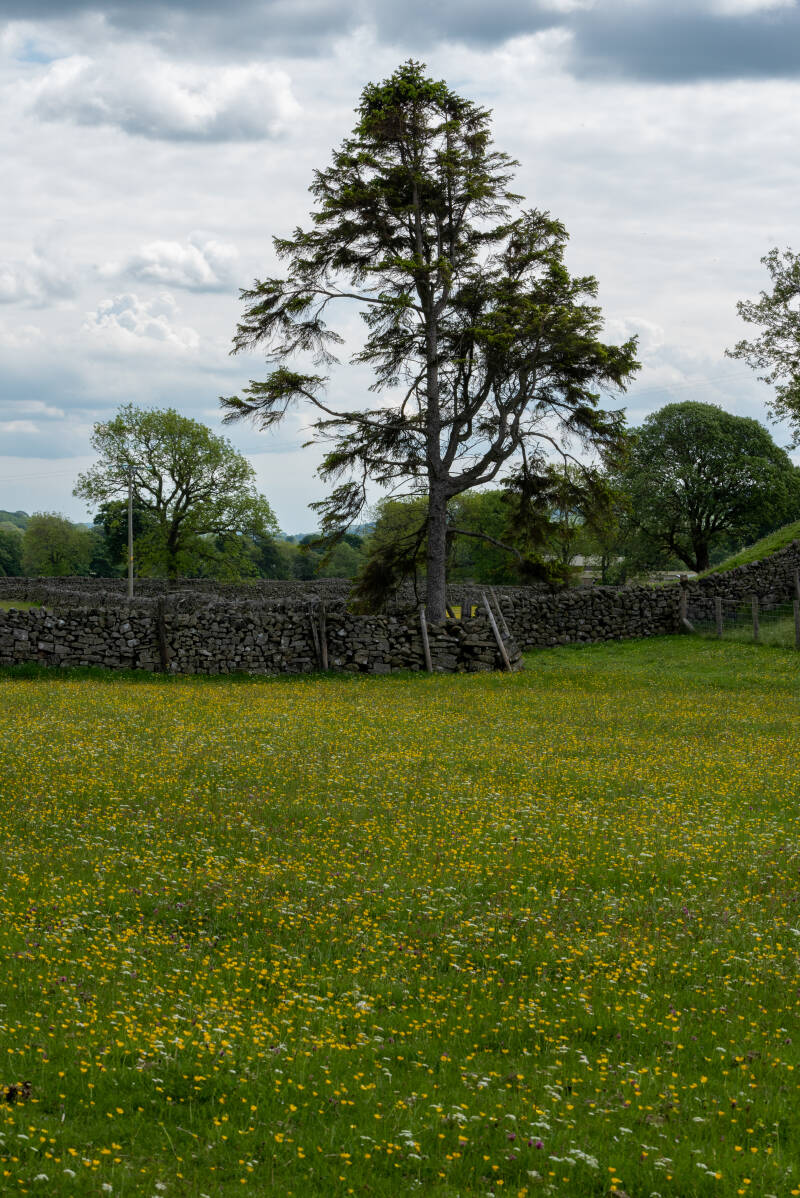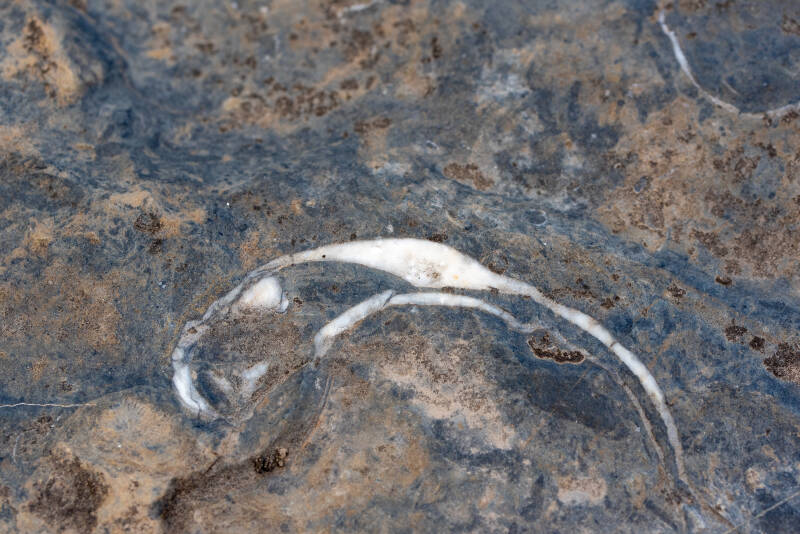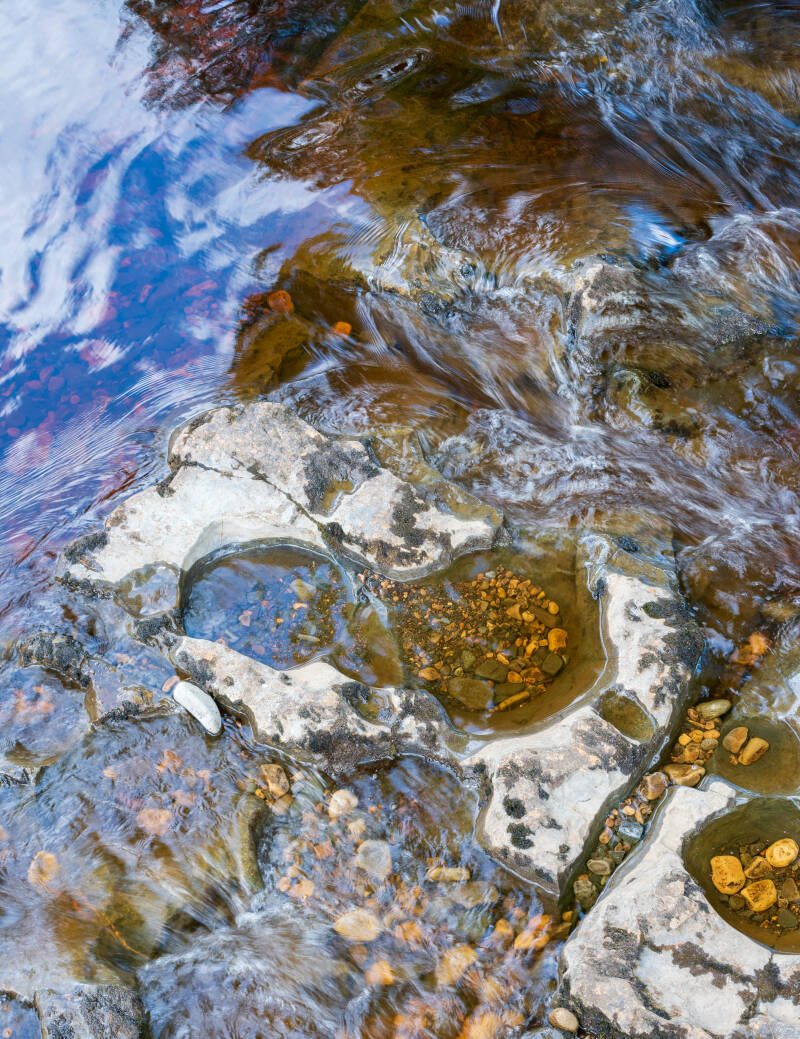Bowlees Visitor Centre - Low Force
The first set of photos were taken on our walk in 2019 starting from the Bowlees Visitor Centre (first photo). The visitor centre is hosted in a former Primitive Methodist chapel. A date stone on the front of the building is inscribed 1904; an earlier chapel on this site was recorded in the 1851 Census. It ceased being used as a place of worship in 1968 and became a visitor centre in 1975.
Here is their internet Link: Bowlees Visitor Centre – North Pennines AONB
The restaurant is very good and you can explore Low Force, Wynch Bridge, High Force and Gibson´s Cave from here. The bridge on one of the first photos is Wynch Bridge just underneath Low Force. The first bridge on the site was erected in 1704 and may have been the first suspension bridge in Europe. It was constructed, simply and precariously, to allow lead miners to get to work elsewhere in the dale from their homes in Holwick (Two photos of Holwick in the distance with the large limestone rocks behind are included) . The old bridge collapsed in 1802 and was replaced by the current one in 1830. On that walk we followed the Tees downstream from Low Force until we reached Scoberry bridge. We read about the fossils in the rocks underneath the bridge just before we started the walk and found them fascinating. Cross Scoberry Bridge and immediately turn right to a large area of flat grey rock by the river bank.
This outcrop of limestone is called the Cockleshell Limestone. We found quite easily white fossilised shells on the smooth, water-worn surfaces. These are shells of the extinct brachiopod called Gigantoproductus. Also long cylindrical remains of crinoids, animals related to modern sea urchins and star fish.These, and many other creatures, lived here almost 350 million years ago, during the Carboniferous Period, when the North Pennines lay under a warm, shallow tropical sea (thousands of miles south of its current position). Just to give you an idea about their size I put a pound coin next to them on one of the photos. I had my new Makro Lens with me and was able to do some good shots of flowers and butterflies as well.
P.S. For those of you who watched the Film "1917". The river scenes at the end of the film were filmed here at that part of the Tees River. When we arrived the film crew camped next to the Visitor centre and they were preparing the filming by laying a cable in the water on which a small wooden raft was drawn along that would carry the soldier presumbably.

